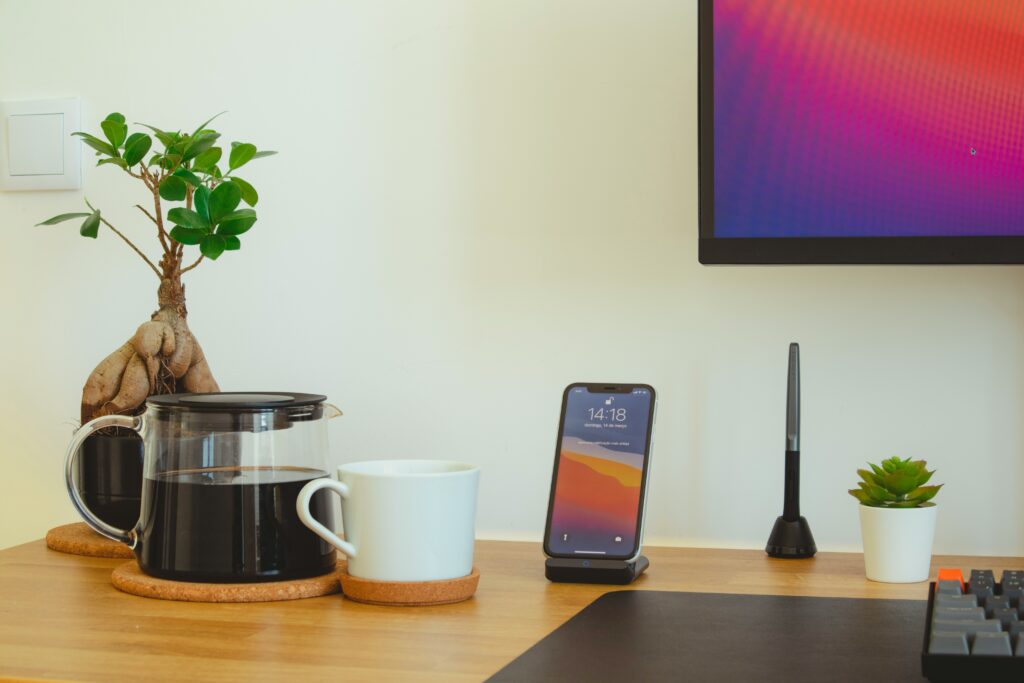Introduction
From Luxury to Mainstream
Smart home technology has moved beyond being a high-end novelty. Once exclusive to tech enthusiasts and new builds, today’s smart devices are accessible, affordable, and increasingly standard in homes of all sizes and budgets. Whether you’re in a city apartment, a suburban home, or somewhere in between, smart devices are becoming the fabric of daily living.
– Smart homes are now a norm, not an exception
– Entry price points are lower than ever
– Devices are easier to install and use, even for total beginners
What You’ll Find in This Guide
This article highlights the most relevant and high-performing smart home devices available right now—curated for function, reliability, and long-term value. We’ll focus on gadgets that bring real improvements to your daily life, not just flashy extras.
Topics covered include:
– Voice assistants that actually enhance productivity
– Smart security systems that don’t require ongoing subscriptions
– Lighting, thermostats, and automation tools that save money and energy
– The latest on device compatibility and future-proofing your setup
Who This Is For
This guide is designed with a spectrum of users in mind:
– Homeowners looking to expand their system with meaningful upgrades
– Renters who want flexible, non-invasive smart solutions
– Tech-curious individuals who aren’t sure where to begin but want smarter living without the overwhelm
Whether you’re building a smart home from scratch or optimizing what you already have, you’ll find practical, clear steps to move forward with confidence.
Voice Assistants That Actually Help
If you’re building a smart home, a solid voice assistant isn’t a bonus—it’s a backbone. The big names still dominate for a reason. Amazon Echo (especially the newer Echo 4th Gen) and Google Nest Audio are top picks for most users. They’ve nailed the basics: fast responses, decent speakers, and broad compatibility across smart home ecosystems.
What’s changed lately? Voice recognition is sharper. Devices are better at distinguishing between household members, serving up personalized calendars, music preferences, and reminders. Multi-room audio control has also gotten smoother—asking for a playlist to move from kitchen to living room actually works now, without the awkward lag or setup headaches.
But they’re not flawless. Alexa can still overstep, misfiring routines or mishearing commands. Google Assistant sometimes locks you to its app ecosystem, limiting flexibility. The fix? Keep routines simple. Use third-party apps like IFTTT or SmartThings to bridge gaps. And always check compatibility before buying that shiny new smart lock or light switch.
Bottom line: Echo and Nest are still the go-to picks for hands-free living—but getting the best out of them means knowing their quirks.
Smart Security Without the Subscription Trap
Not all home security systems are created equal, but a few stand out in 2024. Arlo, Eufy, and Ring remain top-tier picks—but each comes with trade-offs. Arlo brings excellent video quality and flexible storage options, though some features hide behind a subscription. Eufy earns points for local storage and zero monthly fees, but app performance can be hit or miss. Ring offers solid integration with other Amazon products, but privacy concerns and heavy reliance on the cloud are still sticking points.
When choosing a system, focus on features that actually protect, not just impress. Motion zones help you fine-tune what triggers alerts—no more pings when a tree sways. Mobile alerts should be fast and customizable. And for many, local storage is worth the extra upfront cost. It gives you control and avoids constant monthly fees.
Installation is where many people hesitate. Good news: most of these systems are DIY-friendly. If you can use a screwdriver and follow app prompts, you’re in. Professional setup is still an option if you’re short on time or patience, but it’s not essential anymore.
Bottom line—choose the system that matches your comfort level, both with tech and your privacy expectations. Don’t pay monthly fees unless the extras are truly worth it.
Smarter Lighting, Smarter Routines
Smart lighting isn’t new, but it’s finally practical. The early buzz around color-changing bulbs and clap-on party tricks gave way to something better: reliable systems that work when and how you want, without constant fiddling.
Philips Hue and LIFX lead the pack. Hue shines when it comes to ecosystem support and custom scenes across entire rooms—everything from soft morning wake-ups to kitchen task lighting. LIFX ups the game with direct Wi-Fi connectivity and richer colors, perfect for folks who don’t want to deal with hubs.
But smart lighting’s real value lives in routines. Set it and forget it. Lights fade up before your alarm rings. Porch lights switch on at sunset. A subtle glow cues your evening wind-down instead of blaring overheads. These are small tweaks with big impact. No more flipping seven switches when you walk in the door.
And yes, energy savings are real. Smart LEDs use up to 80% less energy than old-school incandescents. Add in automation—like cutting lights when no one’s home or dimming by default—and you get efficiency that shows up on your power bill. It’s not just gadget appeal anymore; it’s daily usefulness with a payoff.
Thermostats That Learn—And Save
Smart thermostats have evolved from tech novelties into practical, money-saving tools. Whether you’re a frequent traveler, a busy family, or simply trying to cut monthly costs, a smart thermostat offers both convenience and efficiency.
Why Smart Thermostats Pay for Themselves
Leading models like Nest and Ecobee do more than just let you control temperature from your phone—they actively help reduce your utility bills.
– Energy efficiency: These devices learn your routine and adjust heating/cooling based on your behavior.
– Remote access: Make adjustments on-the-go, no matter where you are.
– Usage insights: Get reports and suggestions to improve energy habits.
Most households recoup the cost of a smart thermostat within the first one or two heating/cooling seasons. Over time, the savings continue to stack up.
Latest Upgrades Worth Noting
Modern smart thermostats now come with features that make them even more useful:
– Occupancy sensing: Detects presence to avoid energy waste when no one’s home.
– Voice control integration: Works with Alexa, Google Assistant, and Apple HomeKit for seamless hands-free adjustments.
– Geofencing: Uses your phone’s location to trigger temperature changes automatically—cooling when you’re close to home, saving when you’re away.
Tips for Year-Round Optimization
To get the most out of your smart thermostat, consider the following best practices:
– Set smart schedules: Let the thermostat learn your patterns, or customize schedules manually for fine-tuning.
– Use seasonal presets: Many thermostats offer preloaded energy-efficient profiles for summer and winter.
– Optimize zoning: If your home has multiple HVAC zones, make sure each one’s thermostat is working with a shared logic.
– Monitor usage patterns monthly: Keep an eye on system reports and tweak settings as outside temperatures shift.
A smart thermostat isn’t just another gadget—it’s a gateway to smarter energy use, greater comfort, and real savings throughout the year.
Interoperability: Does Your Gear Play Nice?
If you’ve ever tried to pair a smart bulb with the wrong hub—or found out too late that your new video doorbell doesn’t talk to your voice assistant—you know the pain of a fragmented smart home. That’s where Matter and Thread come in.
Matter is a new connectivity standard backed by an unlikely alliance: Apple, Google, Amazon, Samsung, and others who historically didn’t play well together. Think of it as universal language for smart devices. Thread, on the other hand, is the mesh network that helps those devices talk to each other efficiently without overloading your Wi-Fi.
Why the cooperation now? Simple: everyone’s tired of the chaos. Consumers want stuff that just works, and manufacturers want fewer angry returns. So even the big tech giants are giving up territory to make homes more seamless.
What this means for you: More confidence when buying gear. If it’s Matter-certified, it should work with your existing setup—no weird workarounds, no hunting for brand-specific apps. Your smart lock, thermostat, and lights can finally be on speaking terms, even if they come from three different companies.
Bottom line: When shopping smart home tech in 2024, check for Matter support. It’s not a gimmick. It’s the future.
Final Word: Making Smart Choices for Your Smart Home
The hype around smart home gadgets is loud. But smart doesn’t mean complicated—and it doesn’t mean buying every shiny object Amazon recommends. Start simple. Focus on how a device solves a real problem in your daily routine. Want better sleep? Smart lights that dim gradually might help more than a fridge that tweets.
Avoid falling into the trap of platform loyalty too early. Many smart home devices work best when they stay in their lane—lighting, security, climate—not when they try to run your entire life. Ecosystem lock-in might seem convenient now, but it can limit you later if a better product shows up from another company. Look for Matter-compatible and cross-platform gear when you can.
Finally, build only what fits. A smarter home should lower your mental load, not increase it. Pace matters. Layer devices slowly. Adjust. Upgrade when something actually needs improving. Smart homes win when they fade into the background—and just work.
Bonus Resource: Connecting Your Smart Home to a Bigger Ecosystem
Smart homes don’t have to exist in isolation. As more devices become cloud-connected, there’s growing potential to integrate them with broader digital ecosystems—streamlining not just your home, but your workflow, data access, and even business processes.
Why Ecosystem Integration Matters
– Unified control: Manage home lighting, security, and climate under a single app or voice assistant.
– Automation beyond the home: Trigger events based on calendar updates, GPS location, or business workflows.
– Scalability: As your needs grow, connected ecosystems help you scale without constantly changing platforms.
Where to Start
If you’re looking to go beyond smart plugs and sensors, consider how your home setup intersects with your productivity tools, cloud storage, and connected devices in your professional life.
Recommended Read: Choosing the Best Cloud Services for Your Business — a guide to understanding the backbone of digital integration and how cloud services can support both smart living and smart working.
Use this resource to:
– Determine cloud compatibility with your current smart devices
– Understand the pros and cons of popular providers
– Identify opportunities for automation that serve both your personal and professional environments
Wrap-Up
Smart homes aren’t about flash—they’re about function. The goal isn’t to turn your life into a sci-fi demo reel every time you walk into a room. It’s steady, quiet improvements: lights that adjust themselves, locks that keep your home safe without the guesswork, a thermostat that learns when you’re gone and acts accordingly. These aren’t magic tricks. They’re tools that just work, over and over again.
If you’re just starting out, pick one core system—security, lighting, or climate—and get that right. That’s your foundation. Once you’re comfortable, build from there. Add slowly and deliberately.
The trick is resisting the urge to overdo it. You don’t need a fridge that tweets or blinds that sync with sunsets if you’re still fumbling with app interfaces. Keep it simple, keep it stable, and keep it useful.


 Tyler Mapleronsic, a contributing author at wbsoftwarement specializes in full-stack development and cloud technologies. His articles blend technical expertise with real-world applications, guiding readers through complex coding challenges and innovative software practices. Tyler’s goal is to make technology more accessible and impactful for every developer.
Tyler Mapleronsic, a contributing author at wbsoftwarement specializes in full-stack development and cloud technologies. His articles blend technical expertise with real-world applications, guiding readers through complex coding challenges and innovative software practices. Tyler’s goal is to make technology more accessible and impactful for every developer.

